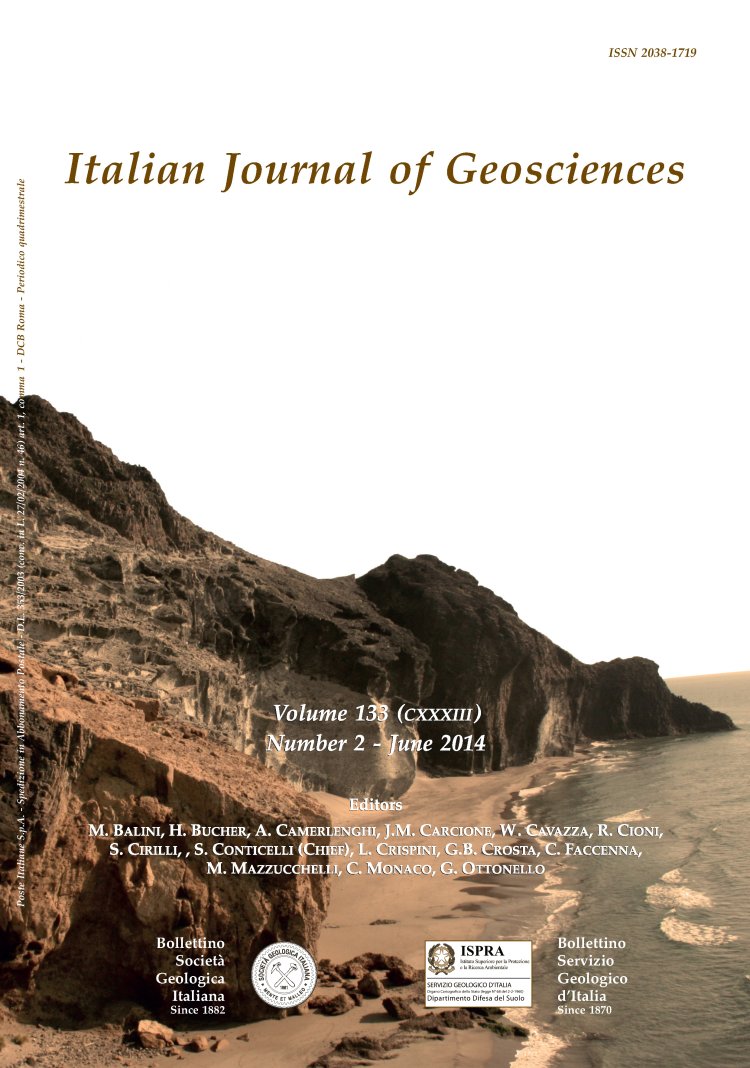
Assessment of the risk of pollution from Arsenic on human health as a function of its speciation in intestinal fluids
Michele Amadori & Patrizia Macera (*)
(*) Dipartimento Scienze della Terra, Università di Pisa, Italy. Corresponding author. Tel +39 502215792; Fax +39 502215800; e-mail:
macera@dst.unipi.it
DOI: https://doi.org/10.3301/IJG.2013.21
Volume: 133 (2014) f.2
Pages: 161-168
Abstract
Investigating the risk on human health arising from exposure to As-polluted drinking water is a very important task since many area of the world has to face with this problem. Actually, chronic poisoning by arsenic carried by water has been well documented in many European and extra-European countries. Pollution of water with arsenic develops generalized symptoms of poisoning and carcinogenesis.
It is well known that inorganic As is rapidly absorbed after oral exposure, but little information is still available about the fate of arsenic after oral ingestion. In particular, the mechanism which affects the speciation of this element in the gastrointestinal tract is not clear, especially when other trace elements are present. In this paper we present an estimate of the health risk due to the ingestion of water containing micro-pollutants, such as As and B, using two
computational codes: PHREEQC, which allowed us to determine the effect of boron on arsenic speciation in equilibrium with the fluids of the gastrointestinal tract; SADA software for assessing the risk of exposure to contaminated matrices. The use of software in the present case study is mandatory since it is quite impossible to obtain experimental data. We focused on a sample area, the geothermal field of Larderello (Italy), where anomalous concentrations of arsenic and boron were found in the drinking water.
The results obtained in this study prove that the risk to human health depends on the speciation of As, which is strictly related to the pH values reached at equilibrium with intestinal fluids. The pH values change as a function of the concentration of boric acid in drinking water. In waters characterized by high contents of B, the risk factor is amplified by the increase of the species As3+ in intestinal fluids. Specifically, this study suggests that interactions between two elements in solution, such as boric acid and arsenic, both in solution in drinking water, can have a negative impact on human health when balanced with intestinal fluids, since the effects of one may magnify the toxicity of the other.
Keywords
Get Full Text